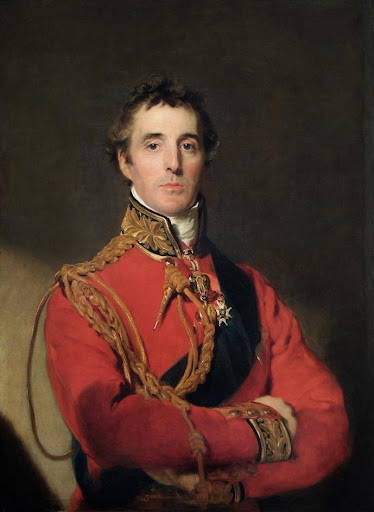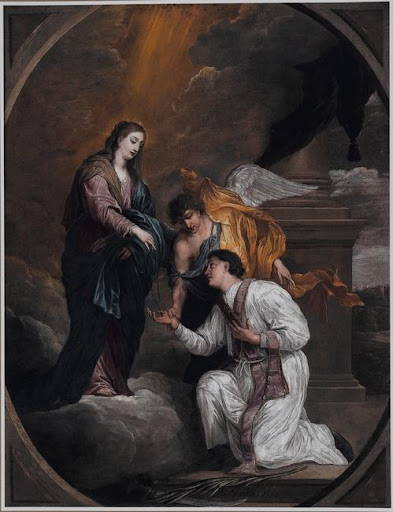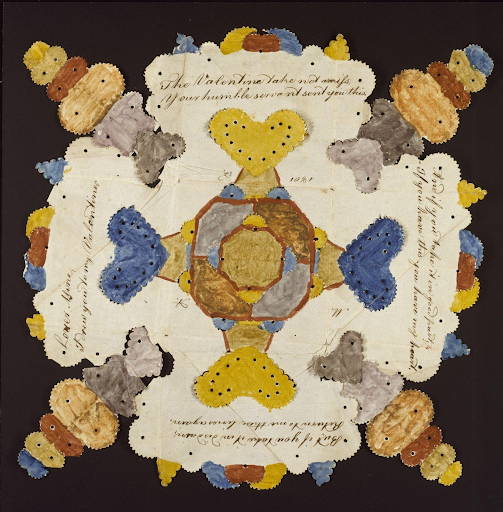Adelaide Magnolia Letter 18 - Wellington and St. Valentine
Letter #18 - Wellington and St. Valentine

Arthur Wellesley (1769-1852), The 1st Duke of Wellington, Thomas Lawrence 1815/1816. Courtesy of English Heritage
Arthur Wellesley, 1st Duke of Wellington, is widely regarded as one of the greatest military leaders in history. He was born in 1769 in Dublin, Ireland to the Earl and Countess of Mornington, Garret Wesley and Anne Hill. Arthur’s elder brother, Richard, who inherited their father’s title after his death in 1781, adopted the variation of Wellesley as his surname and Arthur did likewise in 1798.
Arthur Wellesley’s early life showed little sign of distinction or promise. Following his father’s death, at the age of 12, Arthur entered Eton college where he studied for three years. Though he played the violin and was good at arithmetic, it was here where he experienced extreme loneliness which did not help his academics. In 1785, a lack of funds sent Arthur and his mother to live in Brussels, where Arthur attended private classes.
Arthur’s mother was not hopeful he would amount to much, and thought his only hope would be the military. So in 1786 she enrolled him in the French Royal Academy of Equitation. It was here that Arthur started to show promise. He learned French and became a good horseman. In March 1787, through the help of his older brother Richard, Arthur started his illustrious military career as an ensign, and later that same year in October he was assigned as aide-de-camp to the Lord Lieutenant of Ireland for ten shillings a day.
Arthur Wellesley started making a name for himself in the military and rose in the ranks. He quickly demonstrated his leadership abilities and tactical acumen, earning a reputation for his meticulous planning and strategic thinking. He gained his first major victories in India, where he successfully defeated the forces of Tipu Sultan and the Marathas, establishing British dominance in the region.
Wellesley’s most renowned achievements, however, came during the Napoleonic Wars. As Napoleon Bonaparte's forces swept across Europe, Wellington was appointed as the commander of the British forces in the Iberian Peninsula. It was here that Arthur Wellesley was made Earl of Wellington (and later Marquess following his victories). Here, he employed a combination of superior tactics, disciplined troops, and local alliances to successfully push back the French. Wellington's most notable victories came at the Battle of Salamanca in 1812 and the Battle of Vitoria in 1813, which effectively ended French control of Spain. Wellington continued to have victory after victory in France through 1814. Following Napoleon’s abdication he was made Duke of Wellington and served as Ambassador to France, participating in the Congress of Vienna.
Wellington's crowning achievement came in 1815 at the Battle of Waterloo following Napoleon’s escape from Elba. As Napoleon attempted to make a triumphant return to power, Wellington led a multinational force against him. Despite being outnumbered, Wellington skillfully positioned his troops and coordinated with Prussian forces led by Field Marshal Blücher. The battle ended in a decisive victory for the allied forces, effectively ending Napoleon's reign and securing Wellington's place in history.
Wellington returned to England a war hero and returned his focus to politics. In 1817 he served as Master General of the Ordnance, a military cabinet office under the Prime Minister, and became a prominent fixture in the Tory party. He was also appointed Governor of the Fortress of Plymouth (1819), Commander-in-Chief of the British Army (1827), and Constable of the Tower of London (1827). In 1828, he resigned as Commander-in-Chief and became Prime Minister until 1830 and again from 1834 to 1835. During his time in office, he focused on political and social reforms, including the Catholic Relief Act of 1829, which granted Catholics the right to sit in Parliament. Wellington remained in politics until 1846 when he retired. He passed away in 1852 at the age of 83.
The 1st Duke of Wellington was known by many nicknames. The most well-known being The Iron Duke. Originally the nickname came about because of his immovable resolve in battle and politics, however, it is said to have been used more widely when Wellington installed metal shutters on his house after rioters who were protesting his reforms tried to break into his house. Some of his other nicknames were Nosey or Old Nosey because of his prominent nose, The Beau and The Peer for his fine clothes, and Atty which is short for Arthur.
No matter what you call him, Arthur Wellesley, 1st Duke of Wellington, is remembered as a military genius, a skilled statesman, and a symbol of British resilience. Wellington's strategic brilliance, unwavering determination, and remarkable leadership continue to inspire generations of military leaders and remain an integral part of his enduring legacy.
St. Valentine’s Day

Saint Mary Presents Saint Valentine with the Rosary. David Teniers III. 1677. Courtesy of Netherland Institute for Art History
What we know today as Valentine's Day, celebrated annually on February 14th, has a long history which dates back centuries. Its origins can be traced to ancient Rome, where a festival called Lupercalia was held in mid-February. This pagan celebration was dedicated to fertility and marked the beginning of spring. Over time, Lupercalia merged with the Christian holiday of St. Valentine's Day, named after a priest named Valentine who lived in the third century. According to legends, he defied Emperor Claudius II's ban on marriage and secretly wedded couples. Imprisoned for his actions, he is said to have sent a love letter signed "From your Valentine" to a young girl, cementing his place as a patron saint of love.
Valentine's Day gained popularity in the Middle Ages when the concept of courtly love flourished. The English poet, Geoffrey Chaucer is credited with publicly recognizing Valentine’s Day as a romantic holiday when he wrote his 1375 poem “Parliament of Foules”:
For this was sent on Seynt Valentyne’s day
Whan every foul cometh to choose his mate.
Written valentine’s cards started to become popular after Charles, Duke of Orléans wrote a valentine containing verses he wrote to his wife while being held in the Tower of London following the Battle of Agincourt (Hundred Years War) in 1415. References to St. Valentine’s day are rife in verse through the next centuries. In William Shakespeare’s Hamlet, Ophelia mentions Saint Valentine’s day in Act IV, scene 5.

Homemade valentine 1801. Artist Unknown. Curtesy of the Victoria and Albert Museum
By the 19th century, the exchange of love tokens, including cards, became customary to commemorate St. Valentine’s day. During the Regency period, before cards started to become mass-produced, men and women from all social classes would hand-make cards containing notes and poems and exchange them with each other. These thoughtful cards would range in extravagance from simple paper and ink to expensive card with gilt edges and decorated with lace, flowers, and sometimes even shells. There have been a few examples of valentines from the early 1800’s that are folded into puzzles for the receiver to figure out as they read it.
Flowers, of course, are eternally linked with Valentine’s Day! It was during the Regency period that giving flowers to a valentine on Valentine’s Day became a custom. The Persian poetical language of flowers, wherein each flower holds special meaning, spread through Europe during the 17th and early 18th century as floral dictionaries were published. This language of flowers allowed those giving flowers to their valentines to send messages through the flower or flowers they chose.
Today, thanks to the customs solidified during the Regency Era, Valentine's Day is a global celebration of love and affection, marked by the exchange of gifts, romantic gestures, and expressions of love between partners and loved ones.
Sources:
https://en.wikipedia.org/wiki/Arthur_Wellesley,_1st_Duke_of_Wellington
https://www.regencyhistory.net/2015/06/arthur-wellesley-1st-duke-of-wellington.html
https://www.britannica.com/biography/Arthur-Wellesley-1st-Duke-of-Wellington
https://www.gov.uk/government/history/past-prime-ministers/arthur-wellesley-1st-duke-of-wellington
https://www.nam.ac.uk/explore/old-nosey-duke-wellington
https://janeausten.co.uk/blogs/arts-and-entertainments/the-advent-of-valentines
https://en.wikipedia.org/wiki/Valentine's_Day
https://www.history.com/topics/valentines-day/history-of-valentines-day-2
https://donnahatch.com/valentines-day-in-regency-england/
https://daily.jstor.org/the-origins-of-st-valentines-day/
